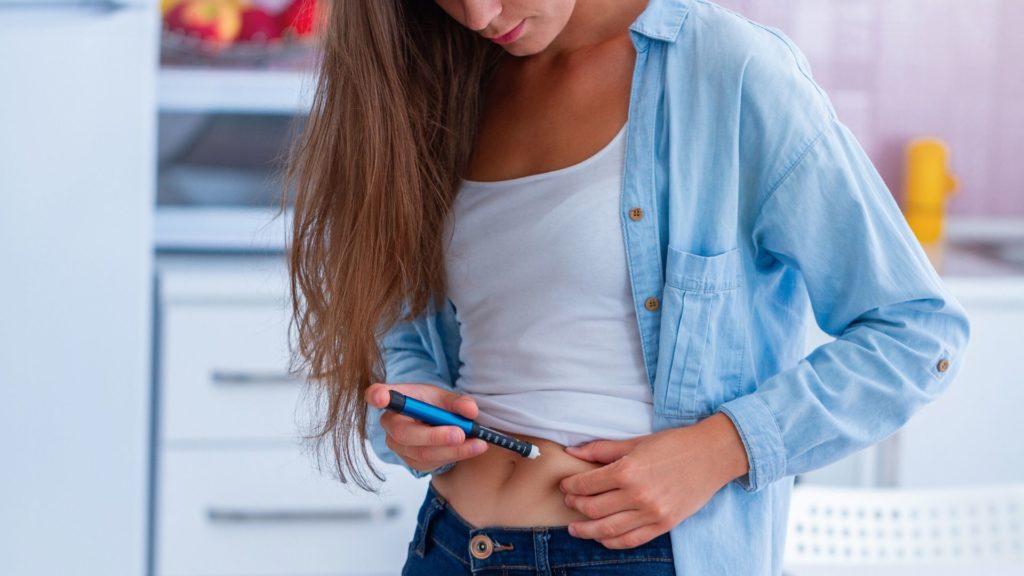Today, most people who take insulin to manage diabetes inject the insulin with a needle and syringe that delivers insulin just under the skin. Several other devices for taking insulin are available, and new approaches are under development.
- Insulin pens can be helpful if you want the convenience of carrying insulin with you in a discreet way. An insulin pen is a device that looks like a pen with a cartridge. Some pens use replacable cartridges of insulin; other pen models are totally disposable. A fine, short needle, similar to the needle on an insulin syringe, is on the tip of the pen. Users turn a dial to select the desired dose of insulin and press a plunger on the end to deliver the insulin just under the skin.
- Insulin jet injectors send a fine spray of insulin through the skin by a high-pressure air mechanism instead of needles.
- External insulin pumps connect to narrow, flexible plastic tubing that ends with a needle inserted just under the skin near the abdomen. The insulin pump is about the size of a deck of cards, weighs about 3 ounces, and can be worn on a belt or in a pocket. Users set the pump to give a steady trickle or “basal” amount of insulin continuously throughout the day. Most pumps today have the option for setting several basal rates. Pumps release “bolus” doses of insulin (several units at a time) at meals and at times when blood sugar is too high based on the users’ programming. Frequent blood glucose monitoring is essential to determine insulin dosages and to ensure that insulin is delivered.
Approaches Under Development
- Implantable insulin pumps are surgically implanted, usually on the left side of the abdomen. The pump is disk shaped and weighs about 6 to 8 ounces. It delivers a basal dose of insulin continuously. Users deliver bolus insulin doses with a remote control unit that prompts the pump to give the specified amount of insulin. An advantage of this method is that, like insulin produced naturally from the pancreas, the insulin from the pump goes directly to the liver to prevent excess sugar production there.
- The insulin patch, placed on the skin, gives a continuous low dose of insulin. To adjust insulin doses before meals, users can pull off a tab on the patch to release insulin. The problem with the patch is that insulin does not get through the skin easily.
- The inhaled insulin delivery system, provides insulin as a dry powder inhaled through the mouth directly into the lungs where it passes into the bloodstream. This aerosol delivery system is about the size of a flashlight and uses rapid-acting insulin.
National Diabetes Information Clearinghouse
1 Information Way
Bethesda, MD 20892-3560
Phone: (301) 654-3327
Fax: (301) 907-8906

